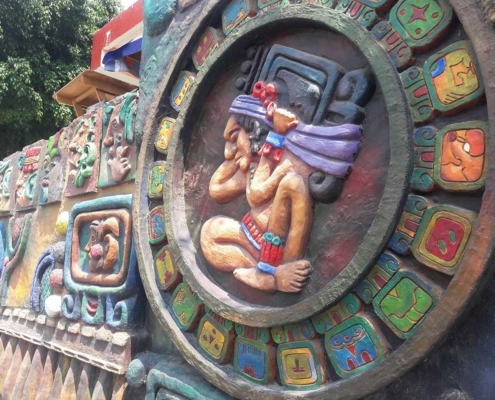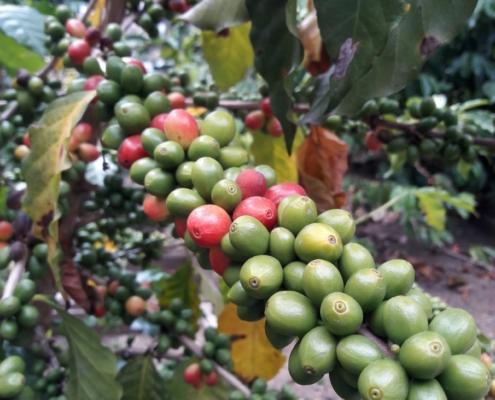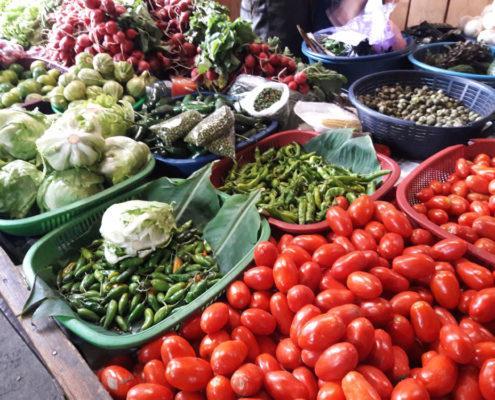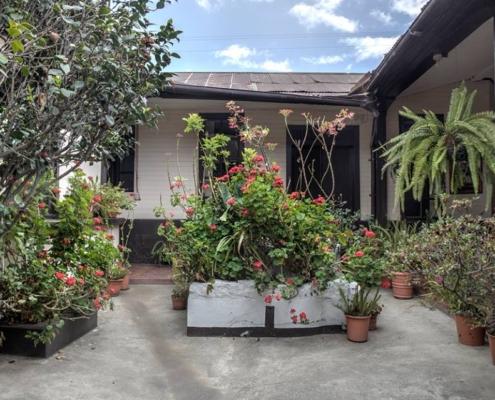Quetzaltenango (Spanish pronunciation: [ketsalteˈnaŋɡo], also known by its Maya name Xelajú [ʃelaˈχu] or Xela [ˈʃela]) is both the capital of Quetzaltenango Department and the municipal seat of Quetzaltenango municipality in Guatemala.
The city is located in a mountain valley at an elevation of 2,330 meters (7,640 feet) above sea level at its lowest part. It may reach above 2,400 m (7,900 ft) within the city.
The inhabitants refer to the city as “Xela,” which is a sizable metropolis with cutting-edge amenities.
For some reason, visitors only associate Xela with Spanish language institutes. This article will try to rectify that by highlighting the region’s other attractions.
Since over 16 years ago, we have offered tours to the majority of Guatemala.
Xela is losing a great friend who has assisted with tours.
For our trips to Xela, we discovered that we needed a new partner.
KAMALBE SCHOOL – GUATEMALA –
Kamalbe Spansh School, 14 Avenida A 4-25, Zone 1 Quetzaltenango, Guatemala
Tel: (+502) 4106-2539
David is the founder of the Kamalbe School.
They are, an independent Spanish school located in the heart of Xela, Guatemala, and they are accredited by the Guatemalan Ministry of Education.
A non-profit institution that provides Spanish instruction in Xela, both privately and in groups, and helps the neighborhood through its social initiatives.
David also plans events like cooking courses, hikes, cacao rituals, coffee tours, and a genuine introduction to Mayan culture.
Hiking a Volcano is one reason travelers come to Guatemala.
Santa María Volcano is a large active volcano in the western highlands of Guatemala, in the Quetzaltenango Department near the city of Quetzaltenango.
The volcano was known as Gagxanul in the local K’iche’ language, which means “Naked Volcano or Mountain”, before the 16th century Spanish conquest of the region.
The VEI-6 eruption of Santa María Volcano in 1902 was one of the three largest eruptions of the 20th century, after the 1912 Novarupta and 1991 Mount Pinatubo eruptions. It is also one of the five biggest eruptions of the past 200 (and most likely 300) years
Authentic Cacao Ceremony
Cacao is the seed from which cocoa and chocolate are made, from Spanish cacao, an adaptation of Nahuatl (Aztecan) cacaua, the root form of cacahuatl (“bean of the cocoa-tree”).
Our claim that our cacao ceremonies are authentic is not a marketing ploy.
Many people in Guatemala have benefited from Mayan ceremonial cacao and ceremonies due to the country’s growing tourism industry.
Americans claim to offer a Mayan cacao ceremony, despite the fact that the majority are not Mayans.
Coffee Tours
Coffee production in Guatemala began to develop in the 1850s. Coffee is an important element of Guatemala’s economy.[1]
Guatemala was Central America‘s top producer of coffee for most of the 20th and the beginning of the 21st century, until being overtaken by Honduras in 2011. Illegal exports to Honduras and Mexico are not reflected in official statistics.
The warmest of the eight coffee-growing regions, San Marcos also has the highest rainfall pattern, reaching up to 200 inches (5,000 mm).
The seasonal rains come sooner than in other regions, producing the earliest flowering.
As in all of Guatemala’s remote regions, most of Volcanic San Marcos is cultivated on farms with their own processing mills. Because of the unpredictability of rainfall during the harvest season, much of the coffee is pre-dried in the sun and finished in a Guardiola dryer
Mayan Cooking Classes
Kamalbe Spansh School Mayan Cooking Classes are perfect for people who love traditional foods and want to learn how to make these dishes.
Classes introduce you to the flavors of ancestral Maya cooking while providing an incredible opportunity to be a part of daily life with a Tz’utujil Maya family.
Enjoy private and small-group Cooking Classes, including a tour of a traditional Quetzaltenango market, where you will learn about unique regional ingredients. This isn’t a cooking demonstration, it’s a hands-on cooking experience.
Participant will prepare and cook the food together.
Throughout the class, you learn abotu the ingredients, tradition, and history behind each dish so you can understand why they are so important to Guatemalan/Mayan culture.
Kamalbe Spansh School Home Stay
|
1. All of our home stay families are within 5-10 minutes’ walking distance from the school.
2. Your host family will provide you with the basic necessities of home, which are:
|








 Lake Atitlan Tours
Lake Atitlan Tours Lke Atitlan Tours
Lke Atitlan Tours